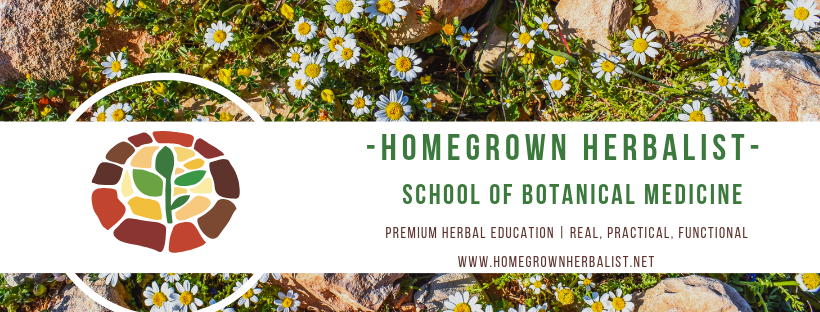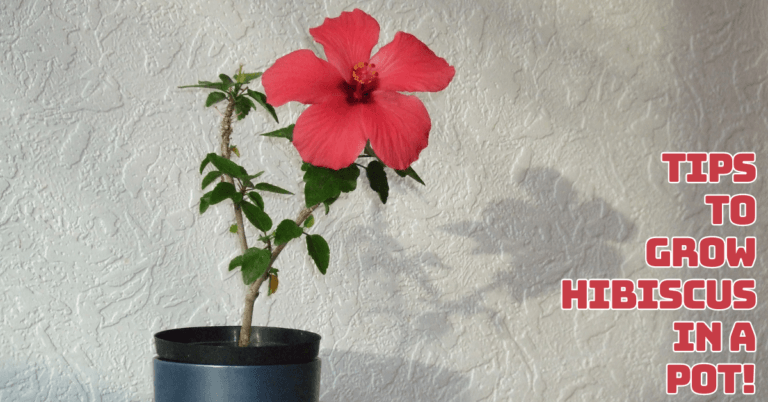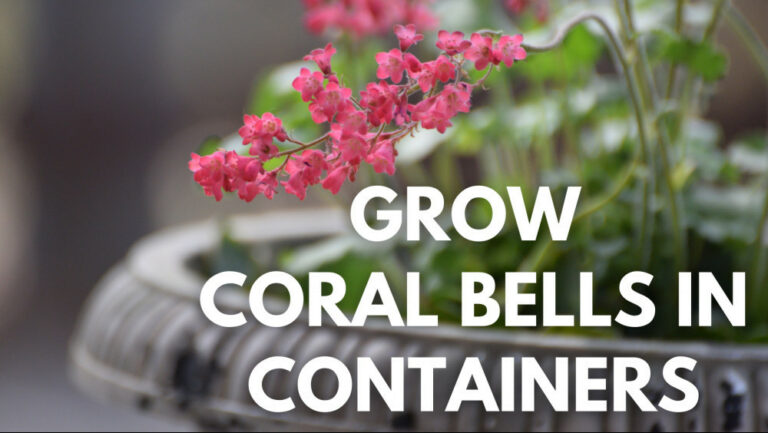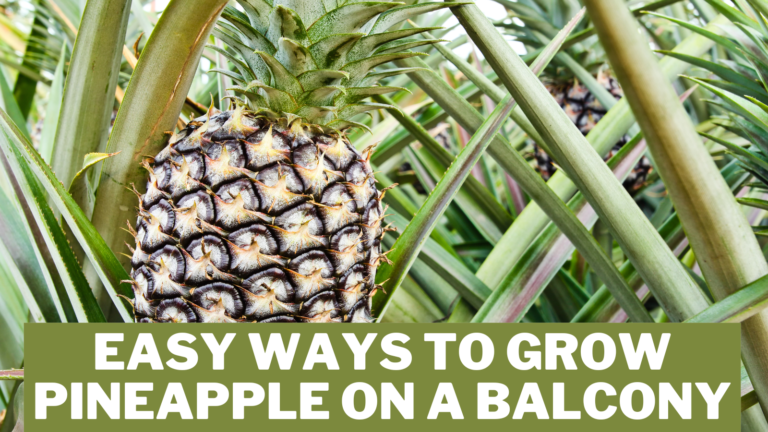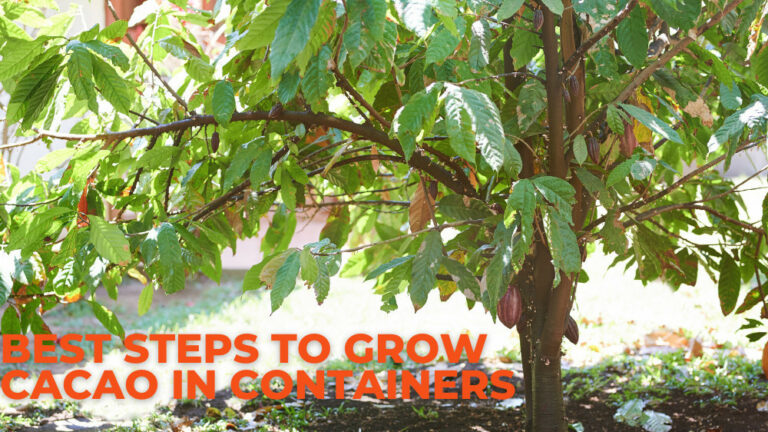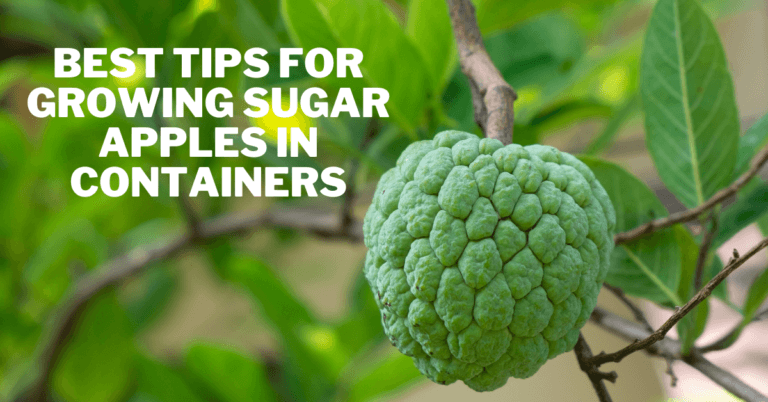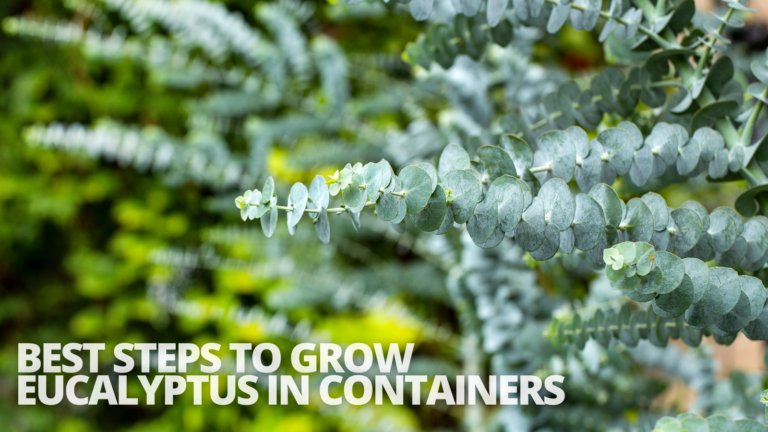How To Grow Dahlias From Seeds
How To Grow Dahlias From Seeds
Learning to grow dahlias from seeds opens the possibility of unique, vibrant blooms that add exciting variety to your garden.
Unlike tubers, growing dahlias from seeds offers endless opportunities for new colours and forms, making each plant a surprise. While dahlias grown from seeds take longer to mature, they can bloom beautifully in a single season with the proper care.
This tutorial will guide you through the process successfully, from choosing seeds to transplanting so that you can enjoy stunning, one-of-a-kind dahlias in your garden.
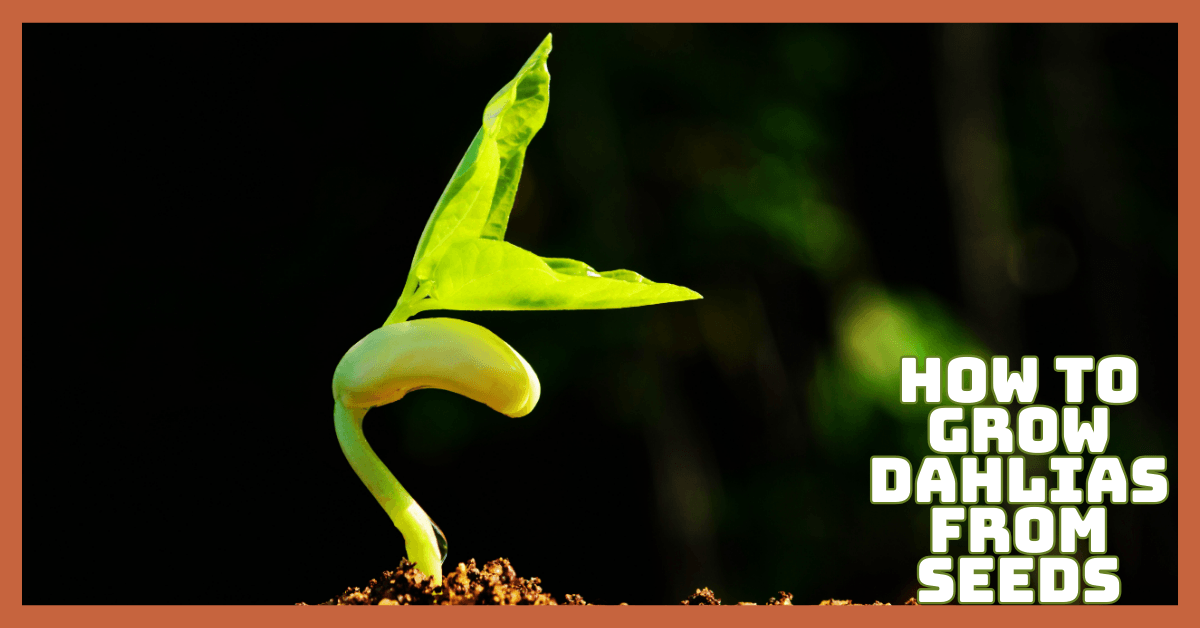
Seeds vs Tubers: Choosing The Best Way To Grow Dahlias
Dahlias have different advantages depending on whether they are grown from seeds or tubers. Growing from seed is exciting because every plant is genetically unique, leading to unpredictable colours and shapes. However, seed-grown dahlias take longer to mature, bloom later in the season, and may not develop tubers.
Conversely, Tubers produces exact copies of the parent plant, ensuring reliable colours, larger blooms, and more prominent flowers.
They also grow faster and can be stored for replanting year after year. If you enjoy experimentation and surprises, seeds are a fun and exciting way to grow dahlias.
But if you prefer predictable results and the best approach, some gardeners start with seeds and save the best tubers for future seasons.
Whatever method you choose, dahlias add stunning colour to any garden. Which do you prefer—seeds or tubers? Let’s discuss this in the comments!
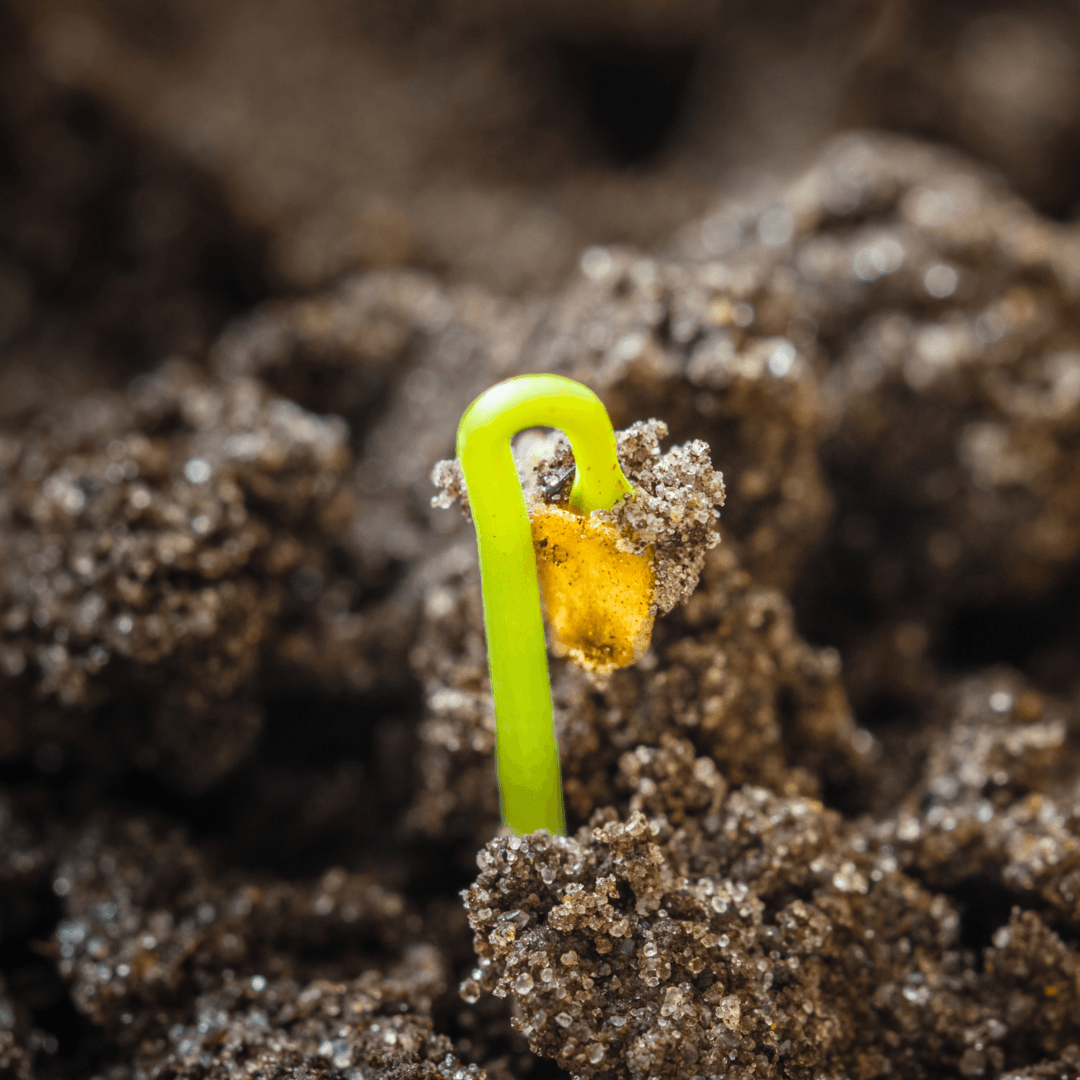
Why Grow Dahlias From Seeds?
Dahlias are a good plant that grows from seed for several reasons.
1. Unique Varieties
Growing dahlias from seed introduces genetic diversity, ensuring each plant has a distinctive colour, shape, and petal structure.
This unpredictability adds excitement for gardeners seeking one-of-a-kind blooms, making every plant a delightful surprise in its growth and floral appearance.
2. Cost-Effective
Dahlia seeds are much cheaper than tubers, allowing gardeners to grow more plants for the exact cost. This affordability makes it an excellent option for those wanting an extensive, diverse flower collection without overspending, efficiently maximizing variety and garden space.
3. Disease Prevention
Seeds are free from viruses and fungal diseases that often affect tubers. Growing from seed ensures healthier plants, minimizing the risk of common infections.
This approach reduces maintenance, prevents losses, and promotes a thriving garden with vigorous, disease-resistant dahlias.
4. Extending
Dahlias grown from seed often bloom earlier than those from tubers, providing an extended flowering season. This allows gardeners to enjoy vibrant blooms for months before frost arrives, ensuring continuous beauty and adding long-lasting colour and charm to the garden throughout the growing season.
5. More Resilient Plants
Seed-grown dahlias adapt better to local conditions, making them more resistant to environmental stress. Over time, they develop stronger stems, improved flowering, and enhanced resilience.
This natural adaptation leads to healthier plants that thrive in diverse climates and perform better in various garden settings.
How To Grow Dahlias From Seeds
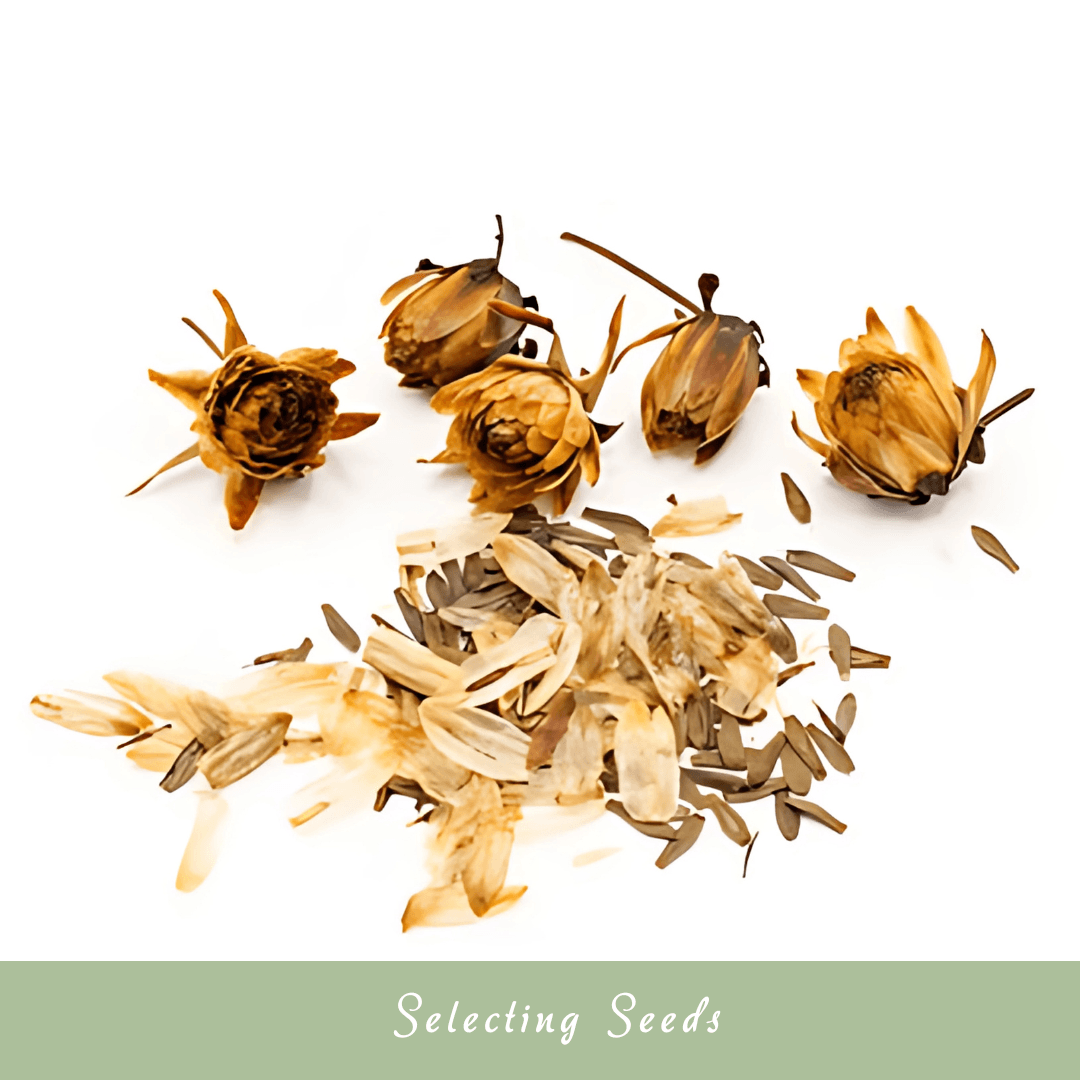
1. Selecting Seeds
When purchasing dahlia seeds, you have a few options:
Open-Pollinated Seeds
These seeds come from naturally pollinated dahlias, resulting in a sown mix of colours and shapes. Since bees, wind, and insects pollinate the flowers, each seed carries unique genetic traits. This unpredictability makes growing open-pollinated dahlias exciting, as every plant is a surprise.
Hybrid Seeds
Hybrid dahlia seeds are produced through controlled pollination, where breeders cross specific parent plants for desired traits like colour, size, or disease resistance.
When learning how to grow dahlias from seeds, hybrid seeds provide more predictable results with uniform blooms but may not produce viable seeds for future planting.
Saving Your Seeds
Dahlia seeds can be collected from existing plants, but their offspring often differ from the parent due to genetic variation.
This method is ideal for gardeners who enjoy experimenting with new colours and forms. To save seeds, dry flower heads thoroughly before harvesting the seeds inside.
2. When To Start Dahlia Seeds
Dahlia seeds should be planted six to eight weeks before the last anticipated frost, as they need a long growing season.
This early start allows seedlings to grow strong and healthy, ensuring they establish well when transplanted outdoors for optimal blooming and performance.
Materials Needed
Start dahlia seeds in seed trays or small pots filled with a high-quality seed-starting mix. Put them on a sunny windowsill or beneath grow lights for light and warmth. To ensure good germination, mist the soil lightly with a spray bottle to avoid overwatering.
Steps To Plant Dahlias From Seeds
1. Use A Well-Draining Seed-Starting Mix
Fill trays or pots with a light, well-draining seed-starting mix to support healthy root development. Avoid heavy garden soil, which can retain too much moisture and cause rot. A good blend ensures blender aeration and drainage, giving seedlings the best start.
2. Plant Seeds At The Right Depth
Sow dahlia seeds about ¼ inches deep and one inch apart to allow proper growth. Planting too deep slows germination, while shallow placement risks drying out. Lightly cover with soil to ensure good seed-to-soil contact for optimal sprouting and healthy development.
3. Don't Let The Soil Get Soggy
To keep the soil damp but not soggy, mist it with a spray bottle. Overwatering can cause fungal issues and hinder germination.
Light misting maintains consistent moisture, allowing seeds to absorb water gradually. This ensures steady sprouting and healthy seedling growth.
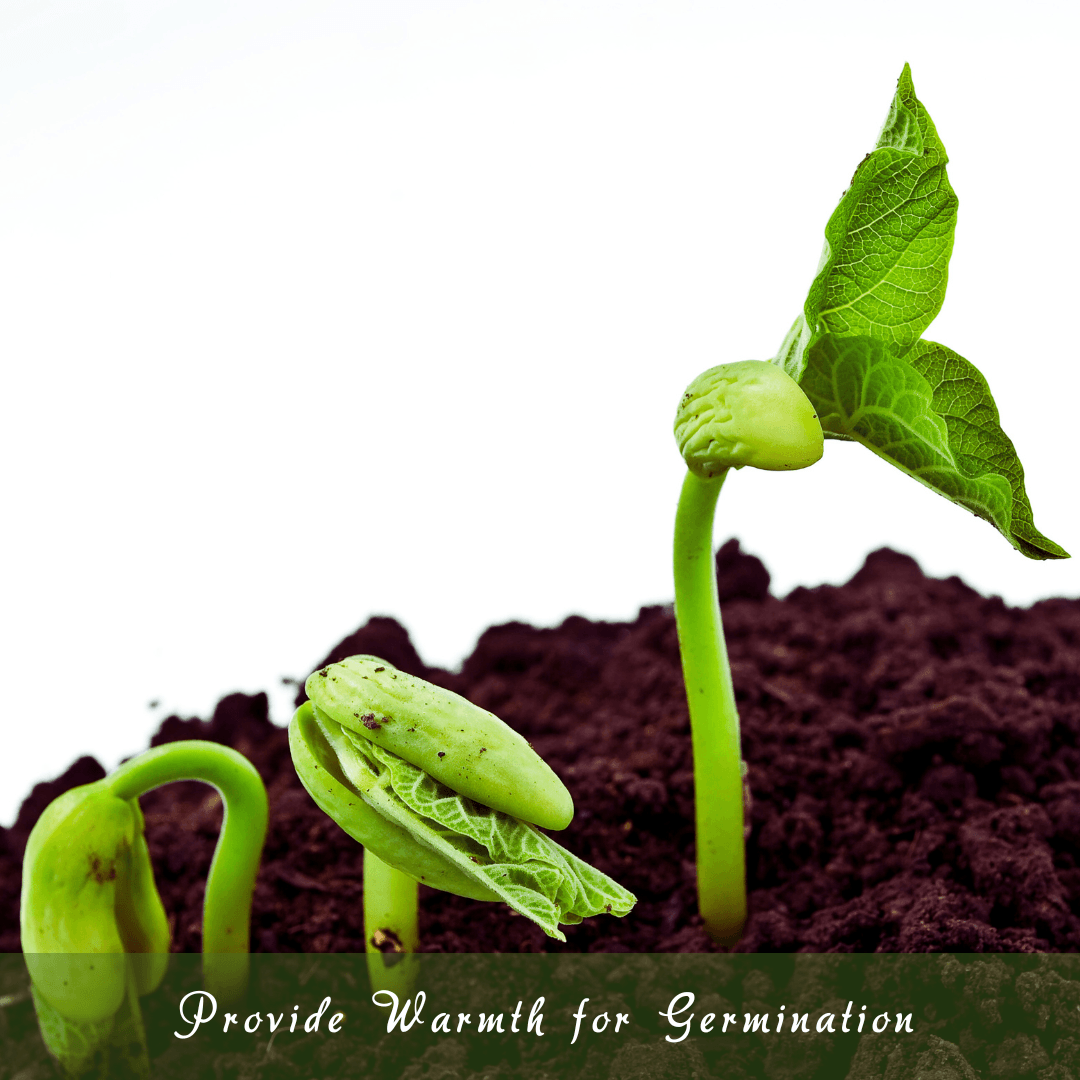
4. Provide Warmth For Germination
To successfully grow dahlias from seed, maintaining a warm temperature of 65-75°F is crucial for faster and more uniform germination, helping seedlings develop strong roots. Warmth encourages faster and more uniform germination, ensuring seedlings develop strong and healthy roots.
5. Ensure Proper Lighting
Once germinated, seedlings need 12-16 hours of light daily. Place them next to a sunny window to avoid weak, lanky growth.
Consistent, bright light encourages sturdy stems and healthy foliage, setting the stage for vigorous plants. The seeds should sprout in 7–14 days. Trim the weaker seedlings after they grow to allow the most vigorous ones to flourish.
6. Watering
Maintain consistent soil moisture to support healthy seedling growth, but avoid overwatering, which can lead to damping-off disease. Water keeps soil from getting soggy. Well-drained soil and proper airflow help reduce the risk of fungal infections.
Planting Dahlias Outdoors
1. Choosing A Location
Plant dahlias in a sunny spot with at least 6-8 hours of direct sunlight daily. Use fertile, well-draining soil with a pH of 6.5-7.0 to promote vigorous growth learning.
How do you grow dahlias from seed? To ensure intense and colourful flowers, put them in a sunny location with nourishing, well-draining soil.
2. Spacing
Plant dahlias 12-18 inches apart to ensure proper air circulation, which helps prevent diseases like mildew and mould. Adequate spacing also allows each plant enough room to grow, promoting strong stems, lush foliage, and abundant blooms without competition for nutrients or sunlight.
3. Planting Depth
When transplanting dahlia seedlings, keep them at the same depth as in their containers. Planting too deep can stress the roots' placement, while planting too shallow can cause instability. To aid in the establishment of the seedlings, water them thoroughly and gently press the dirt around the base.
Caring For Outdoor Dahlias
1. Watering
Water dahlias thoroughly 2-3 times per week, adjusting based on rainfall and soil conditions. Deep watering encourages strong root development, while overwatering can cause rot. Ensure soil stays moist but not soggy, focusing on the base to prevent fungal diseases on leaves.
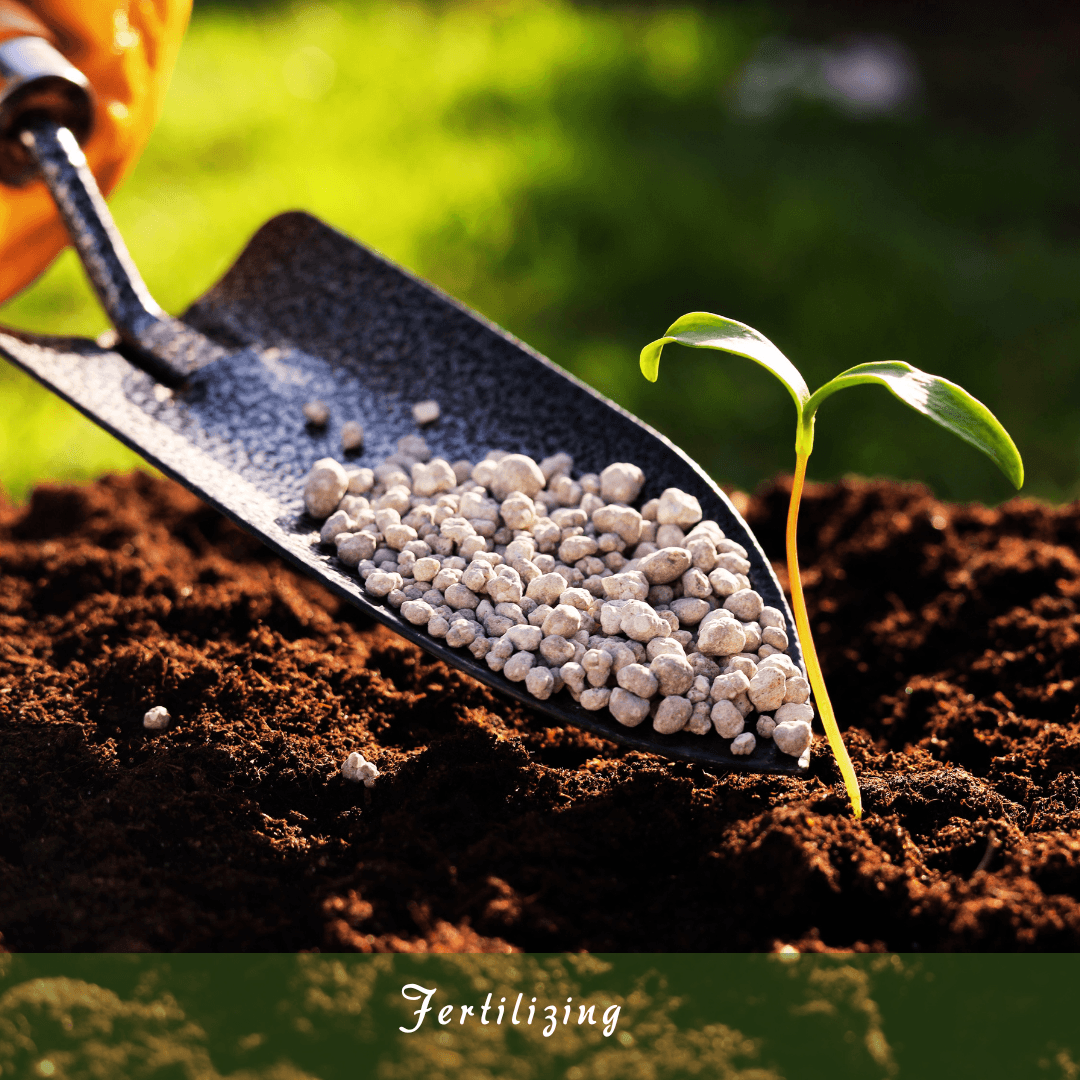
2. Fertilizing
Once established, feed dahlias with a balanced 10-10-10 fertilizer to support healthy growth. Reapply when buds form to boost flowering.
Avoid excessive nitrogen, which promotes leafy growth over blooms. Organic compost or liquid fertilizers can enhance soil nutrients for sustained plant health.
3. Staking
Tall dahlia varieties need staking to prevent stems from bending or breaking. Insert stakes early to avoid root disturbance, securing stems loosely with soft ties.
Proper support keeps plants upright, especially in windy conditions, ensuring strong growth and maximizing flower production.
4. Deadheading
Remove spent flowers regularly to promote ongoing blooming. Snip faded blooms just above a leaf node to direct energy toward new growth.
This practice prolongs the flowering season, keeps plants looking tidy, and prevents seed formation, allowing dahlias to focus on producing more vibrant blooms.
5. Harvesting Dahlias
Harvest dahlias early in the morning or evening when it's cool. Choose nearly fully opened blooms, as buds won’t open after cutting. Use sharp shears, and cut stems at a 45-degree angle.
Remove lower leaves to prevent rot. Then, immediately place the stems in lukewarm water and let them rest in a cool spot. To keep them fresh longer, change the water daily and trim the stems every few days.
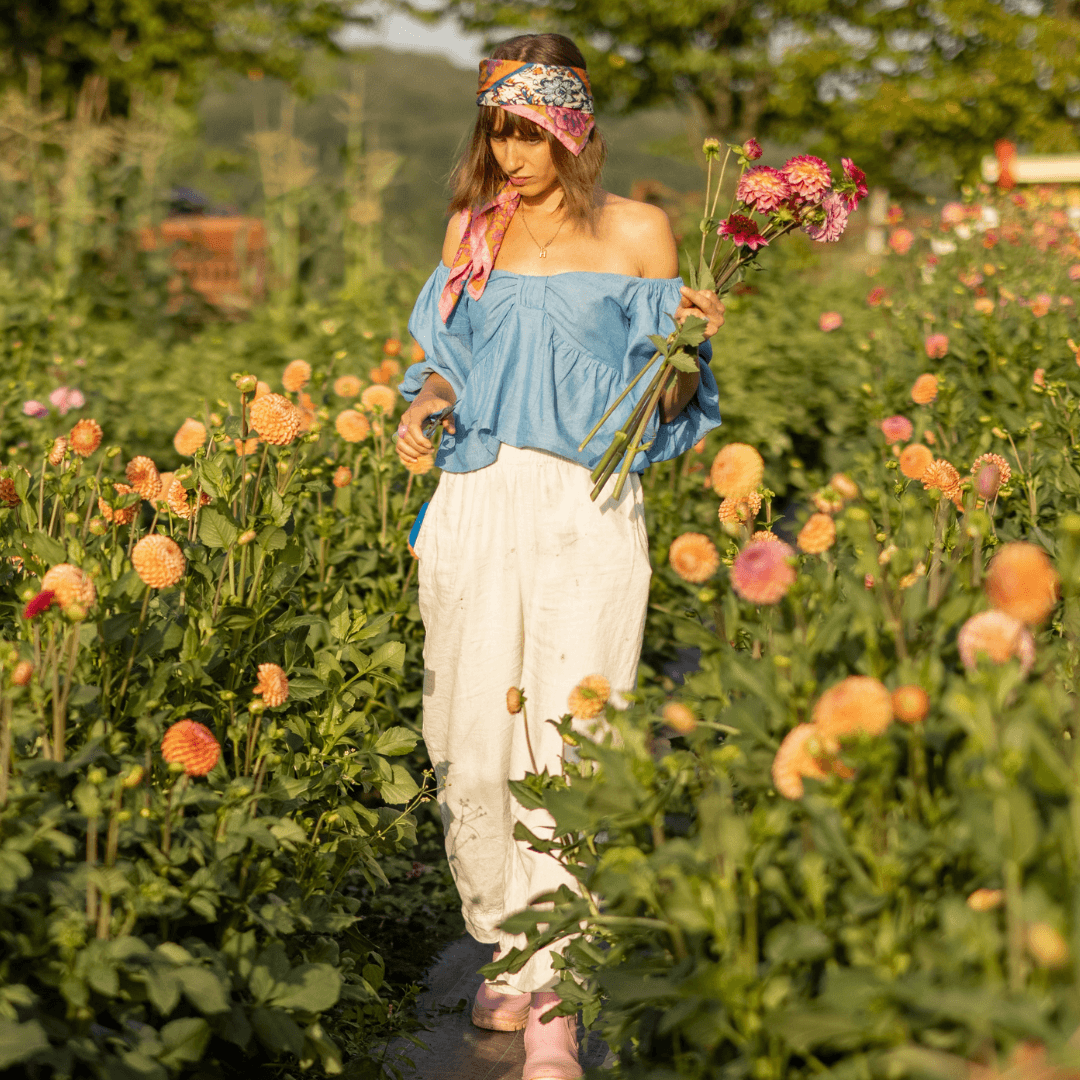
Common Challenges When Growing Dahlias From Seeds
1. Slow Germination
Dahlia seeds can sometimes take longer to germinate, especially if they are not kept at the optimal temperature (65-75°F). Slow germination can be frustrating, but patience is key.
Solution
To warm your seeds, use a heat pad or place them in a warm location. Always use fresh seeds for optimal results, as aged seeds may lose their vitality.
2. Poor Soil Conditions
If the soil is too heavy or doesn’t drain well, seedlings can suffer from root rot or poor growth. This is common in heavier garden soils, significantly when growing dahlias indoors.
Solution
Use a well-draining seed-starting mix that allows for proper air circulation to improve drainage. You can amend and provide drainage. Always ensure your pots or trays have adequate drainage holes.
3. Damping-Off Disease
Seedlings that suffer from the fungal disease” wilt and die.” The danger is increased by inadequate air circulation, and the disease flourishes in cool, humid environments.
Solution
To prevent damping off, ensure adequate circulation around the seedlings and keep the soil damp but not soggy. A fan in the growing area can help with air circulation. Watering at the base is essential to avoid wetting the seedlings directly.
4. Weak Seedlings
Sometimes, seedlings may appear weak or leggy, especially if they don’t get enough light. This weak growth can cause them to flop over, making them harder to transplant.
Solution
If natural sunlight is insufficient, use grow lights to ensure your seedlings get 12-16 hours of light daily. Position the lights close to the seedlings but not too close to prevent burning. Consider adjusting the light so that the seedlings appear leggy.
5. Transplant Shock
Young dahlias can experience transplant shock when moved from their indoor environment to the garden, resulting in stunted growth or wilting.
Solution
Harden off seedlings gradually by exposing them to outdoor conditions for a few hours a day before full transplanting. This allows them to acclimate to wind, sunlight, and fluctuating temperatures, reducing shock.
6. Inconsistent Watering
Both overwatering and underwatering can stress seedlings, leading to unhealthy plants. Underwatering can cause wilting and poor growth, whereas overwatering can cause root rot.
Solution
Mist the soil with a spray bottle to keep it continuously damp but not saturated. Water only when the top of the soil feels dry, and ensure that pots have good drainage.
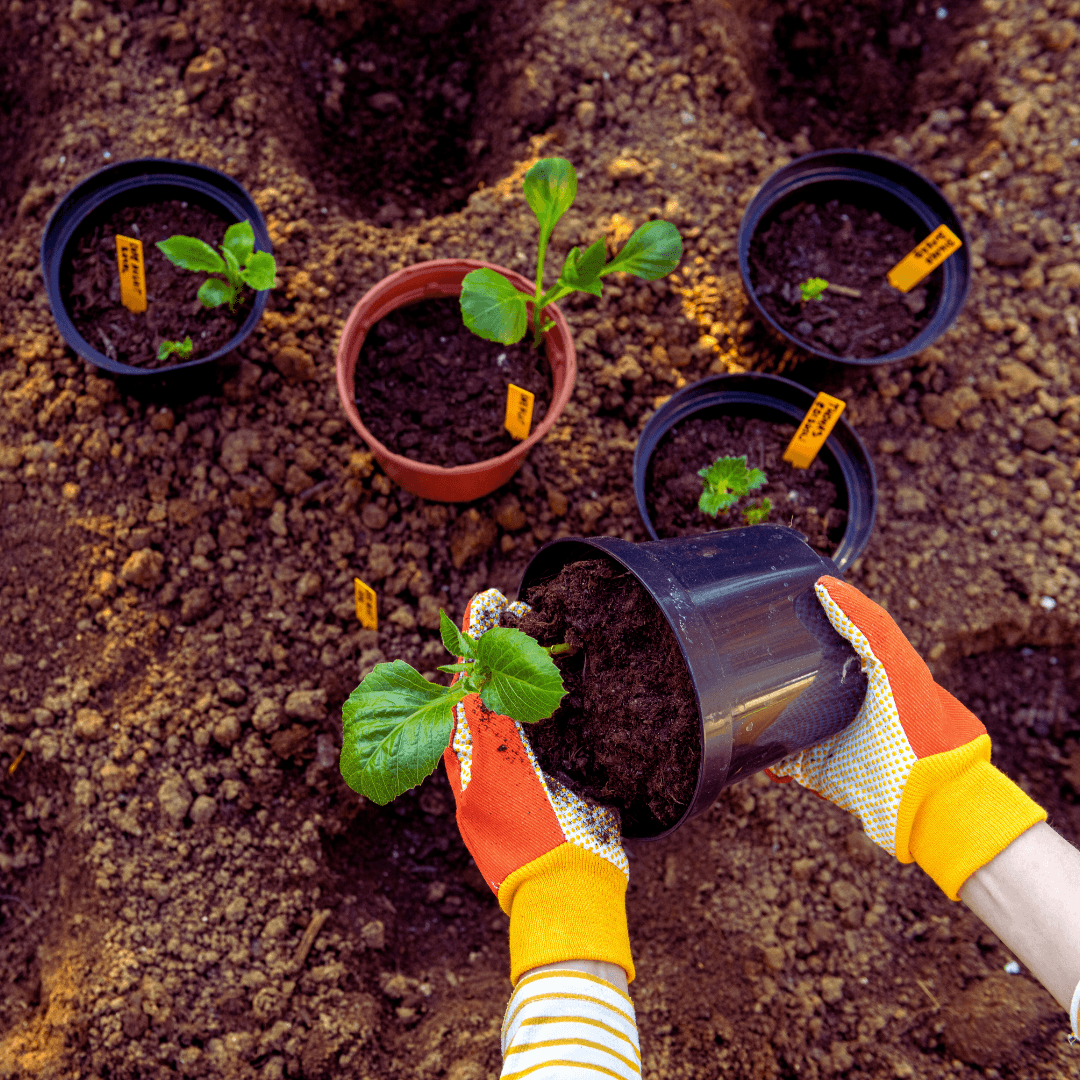
How To Avoid Common Diseases In Dahlia Seedlings
To keep dahlia seedlings healthy, start with disease-free seeds, ensure good air circulation, Water wisely, monitor pests, prevent fungal infections, and harden off before transplanting to boost resilience.
1. Start With Healthy Seeds & Soil
To reduce the risk of infections, begin with high-quality, disease-free e. Use a sterile, well-draining potting mix to prevent soilborne diseases.
Avoid reusing old soil, as it may contain harmful pathogens. Starting with clean materials ensures vigorous, healthy seedlings with better disease resistance.
2. Maintain Proper Air Circulation
Good air circulation is crucial to preventing fungal infections like powdery mildew. Space seedlings well apart to avoid overcrowding and to allow airflow between plants.
Using a small fan indoors or ensuring outdoor seedlings get fresh air reduces humidity buildup, lowering the risk of mould, mildew, and bacterial growth on leaves.
3. Water Wisely
Overwatering is a leading cause of disease in dahlia seedlings, promoting fungal issues like damping-off. Water seedlings at the base, avoiding wetting the leaves. Root rot and other waterborne illnesses can be avoided with a well-draining mix and pots with drainage holes.
4. Monitor For Pests
Pests like aphids, spider mites, and thrips can weaken seedlings and introduce diseases. Inspect leaves regularly for signs of infestation, such as discoloration or webbing.
If pests appear, treat them with neem oil or insecticidal soap. Keeping the environment clean reduces pest attraction and potential disease transmission.
5. Prevent Fungal & Bacterial Diseases
Fungal and bacterial diseases can quickly destroy seedlings. To prevent them, use sterilized soil, avoid excessive moisture, and ensure good air circulation.
If signs of disease appear, remove affected seedlings immediately. Applying a light dusting of cinnamon or a fungicide can help combat early-stage fungal infections and prevent spreading.
6. Harden Off Before Transplanting
Seedlings must gradually adapt to outdoor conditions before transplanting to avoid shock. Start by placing them outside for a few hours daily, increasing exposure weekly.
This process strengthens their resistance to environmental stressors, making them less susceptible to diseases caused by sudden temperature changes and harsh weather conditions.
FAQ
1. How Long Does It Take For Dahlia Seeds To Germinate?
Dahlia seeds germinate in 7–14 days, depending on the temperature and conditions. Keep warm (70–80°F) and moist for the best results. For the best results
2. Should I Start Dahlia Seeds Indoors Or Outdoors?
It is recommended that dahlia seeds be started indoors 6–8 weeks before the last expected date. This gives the plants a head start and allows them to grow strong before transplanting them outside after the danger of frost has passed.
3. Do Dahlias Grown From Seed Look Like The Parent Plant?
No, dahlias grown from seed can produce quite different flowers from the parent plant. If you’re increasing hybrid varieties, the resulting flowers may have unique colours and shapes that are not identical to the parent varieties.
4. How Far Apart Should I Plant My Dahlia Seedlings?
Depending on the variety, space your dahlia seedlings at least 18–24 inches apart. Larger varieties need more space to grow, while smaller varieties can be placed closer together.
5. Are Dahlias Prone To Pests Or Diseases?
Yes, dahlias can attract pests like aphids and slugs. Powdery mildew and other fungal illnesses can also impact them. Use natural cures like neem oil or insecticidal soap, and watch for diseases and pests.
6. Can I Save Dahlia Seeds For Next Year?
Yes, you can save dahlia seeds from your plants at the end of the growing season. However, remember that saved seeds may not produce plants identical to the parent plants, especially if they are hybrid varieties. To preserve the seeds, let the blossoms ripen completely before harvesting them.
7. How Do I Store Dahlia Tubers For The Winter?
At the end of the growth season, when the plants die back, carefully dig up the tubers and let them dry for a few days. To prevent freezing, store the tubers in a paper bag or box overnight in a superb, dry location.
Conclusion
Following proper seed selection, planting techniques, and care, you can learn how to grow dahlias from seeds and enjoy unique, vibrant blooms in your garden. While the process requires patience and care, it offers the excitement of cultivating one-of-a-kind flowers.
I trust you enjoyed this How To Grow Dahlias From Seeds article. Please stay tuned for more blog posts soon. Take care!
JeannetteZ
>>>Please click here to read my all-inclusive article, About The Essential Companion Planting Guide<<<
>>>Please click here to read my all-inclusive article about Container Gardening<<<
>>>Are you interested in homegrown herbs and medicine? Please click here to find out more about it!<<<
Your Opinion Is Important To Me
Do you have thoughts, ideas, or questions? I would love to hear from you. Please leave me your questions, experiences, and remarks about this article, How To Grow Dahlias From Seeds, in the comments section below. You can also email me at Jeannette@Close-To-Nature.org.
Disclosure
This post may contain affiliate links. As an Amazon Associate and other affiliate programs, I earn from qualifying purchases at no extra cost to you. Please read my full affiliate disclosure.
You might also enjoy these blog posts:
Ultimate Guide To Indoor Orchid Plant Care
Indoor Orchid Plants That Transform Your Spaces
A Comprehensive Guide To The Types Of Orchid Plant
A Guide To The Various Types Of Bromeliad Plants
Stunning Types Of Dahlia Plants You’ll Love

